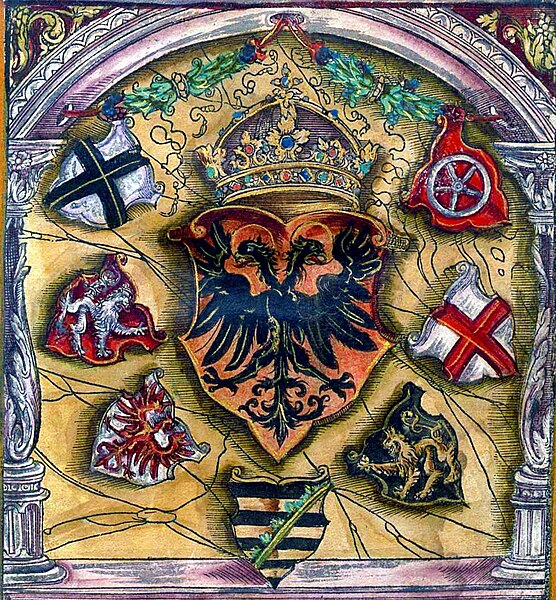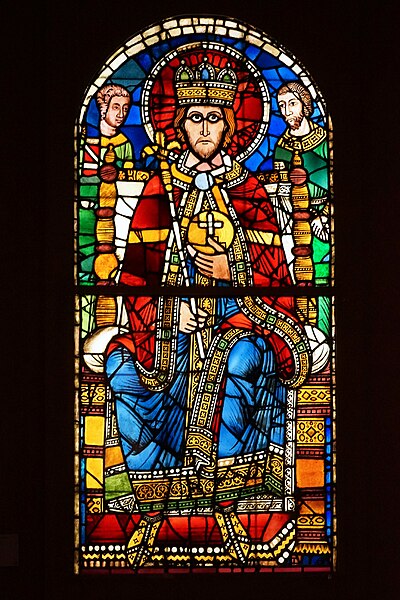Henry IV, Holy Roman Emperor
Henry IV was Holy Roman Emperor from 1084 to 1105, King of Germany from 1054 to 1105, King of Italy and Burgundy from 1056 to 1105, and Duke of Bavaria from 1052 to 1054. He was the son of Henry III, Holy Roman Emperor—the second monarch of the Salian dynasty—and Agnes of Poitou. After his father's death on 5 October 1056, Henry was placed under his mother's guardianship. She made grants to German aristocrats to secure their support. Unlike her late husband, she could not control the election of the popes, thus the idea of the "liberty of the Church" strengthened during her rule. Taking advantage of her weakness, Archbishop Anno II of Cologne kidnapped Henry in April 1062. He administered Germany until Henry came of age in 1065.
Henry in full regalia (depicted in the 11th-century Evangelion of Saint Emmeram's Abbey)
Throne of Charlemagne in the Palatine Chapel in Aachen
Henry jumps from Archbishop Anno II of Cologne's ship into the Rhine at Kaiserswerth in 1062 (engraving by Bernhard Rode, 1781).
Henry's brother-in-law, King Solomon of Hungary, appeals to Henry for help (miniature in the 14th-century Vienna Illuminated Chronicle).
The Holy Roman Emperor, originally and officially the Emperor of the Romans during the Middle Ages, and also known as the Roman-German Emperor since the early modern period, was the ruler and head of state of the Holy Roman Empire. The title was held in conjunction with the title of king of Italy from the 8th to the 16th century, and, almost without interruption, with the title of king of Germany throughout the 12th to 18th centuries.
Longest reigning Frederick III 19 March 1452 – 19 August 1493
Coats of arms of prince electors surround the imperial coat of arms; from a 1545 armorial. Electors voted in an Imperial Diet for a new Holy Roman Emperor.
Depiction of Charlemagne in a 12th-century stained glass window, Strasbourg Cathedral, now at Musée de l'Œuvre Notre-Dame.
Illustration of the election of Henry VII (27 November 1308) showing (left to right) the Archbishop of Cologne, Archbishop of Mainz, Archbishop of Trier, Count Palatine of the Rhine, Duke of Saxony, Margrave of Brandenburg and King of Bohemia (Codex Balduini Trevirorum, c. 1340).








